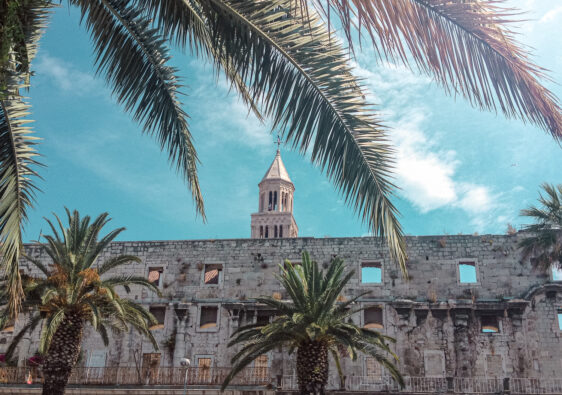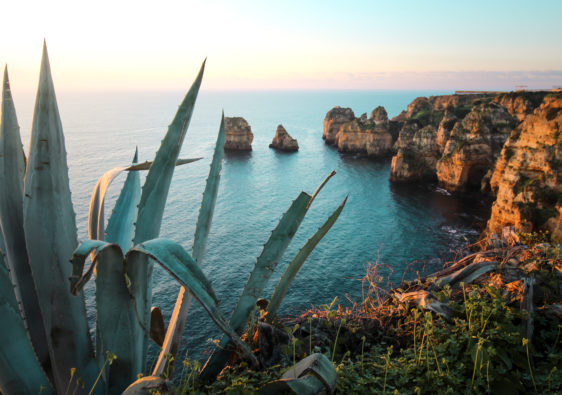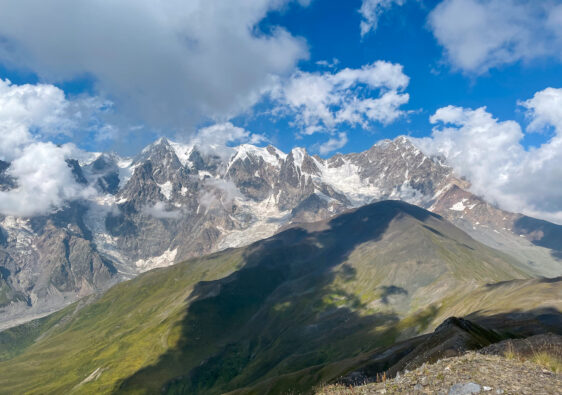If you ever find yourself in the Northern Hemisphere around December to February, bogged down in the winter blues, and in serious need of vitamin D, southern Spain is your answer. Specifically Andalusia.
With only on average 7 days of rain in the rainiest month of December (compare that to 23 in Ireland…), it’s a pretty sure bet that you’ll get something very close to summer if you visit Andalusia in Europe’s winter months. When we visited over the Christmas holiday week, we had nonstop sun and temperatures of 18C.
While it’s not quite beach appropriate, the weather is perfect for exploring cities and Moorish architecture and hiking in areas that would otherwise be scorching hot and impossible in the summer months.
Since there are plenty of travel blogs covering each of the Andalusian cities in detail, we’ll just stick to covering the planning logistics here.
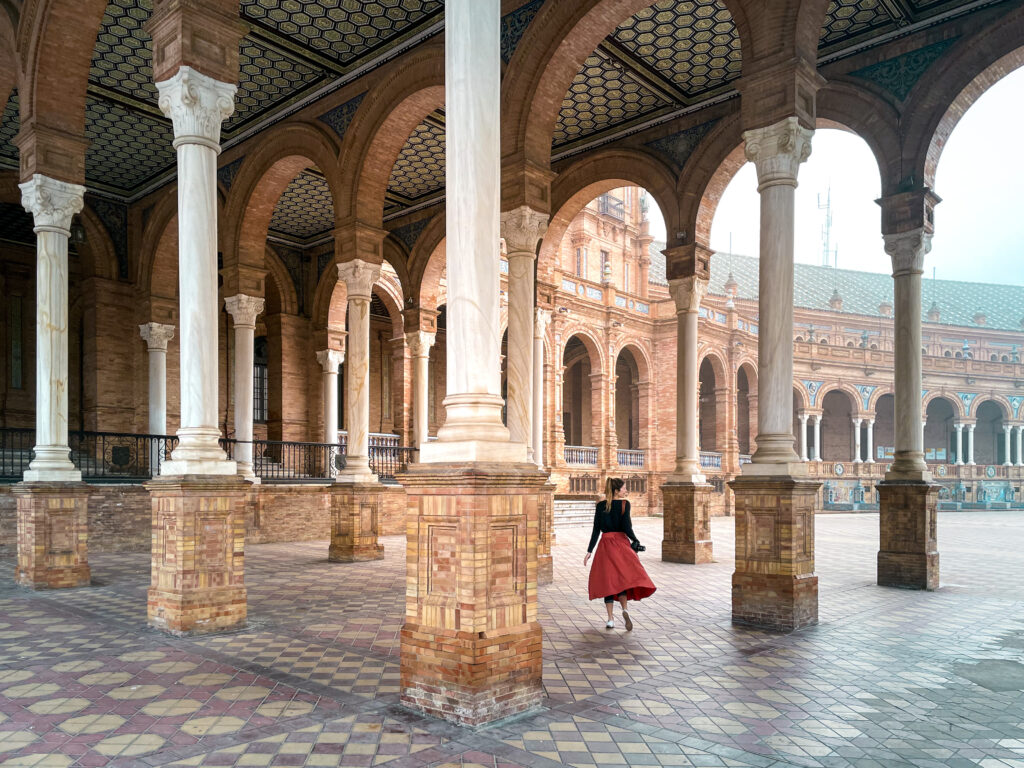
Packing Andalusia into a Week
For a full week (9 days if from Saturday to the following Sunday), you can easily visit four cities and sneak in hikes as well. We did the following and would recommend it to allow for down time in between crazy schedules:
Day 1: Seville – arrival day, wander around the city
Day 2: Seville – visit Plaza de Espana in the morning, visit the Alcazar in the afternoon
Day 3: Morning train to Cordoba – wander around the city or hike up one of the neighbouring hills
Day 4: Cordoba – visit the Alcazar and the Mosque
Day 5: Morning train to Granada – visit the Alhambra
Day 6: Granada – hike from Beas de Granada back to Granada
Day 7: Drive towards Antequera – visit an olive farm and hike around El Torcal
Day 8: Head to El Chorro for a hike in the morning/early afternoon, and back to Antequera by the evening
Day 9: Depart (either from Malaga, Seville, or Granada)
Only for the last three days if you want to explore some of the hiking areas, you might want to rent a car. Otherwise, you can catch a train from Malaga to El Chorro, or a taxi to El Torcal.
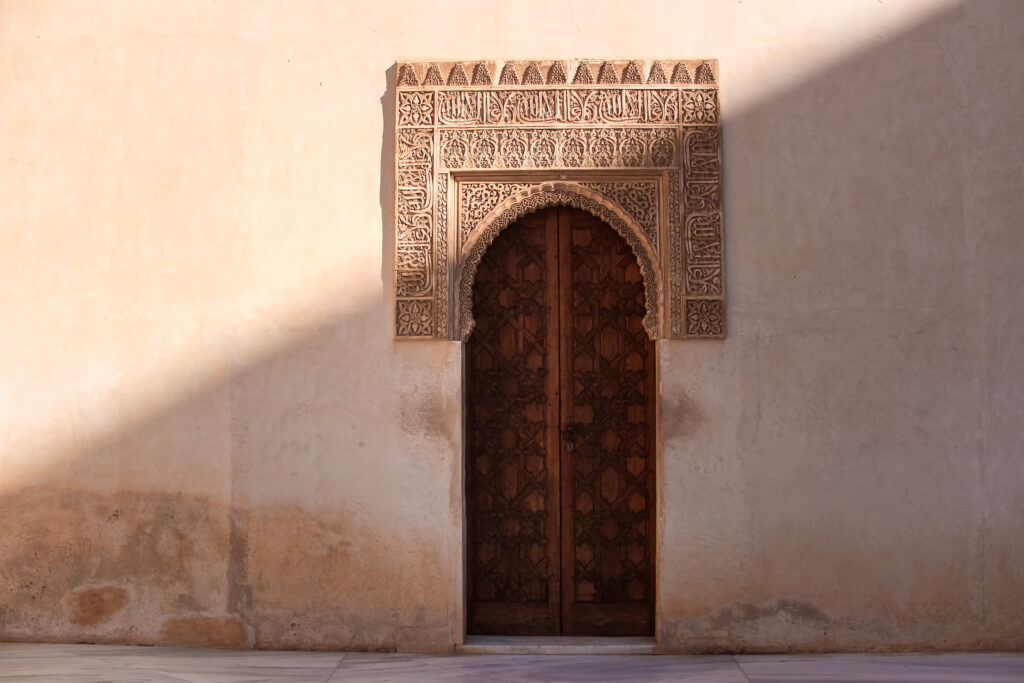
Tips for Visiting the Famous Sites in the Cities
The general rule to enjoying a site away from the maddening rush of the crowds is to be there at the opening time. Most people come later in the day, so if you can get there first thing, do it. Also, be careful to book your tickets on the official websites of these museums – there are many sneaky official-looking websites.
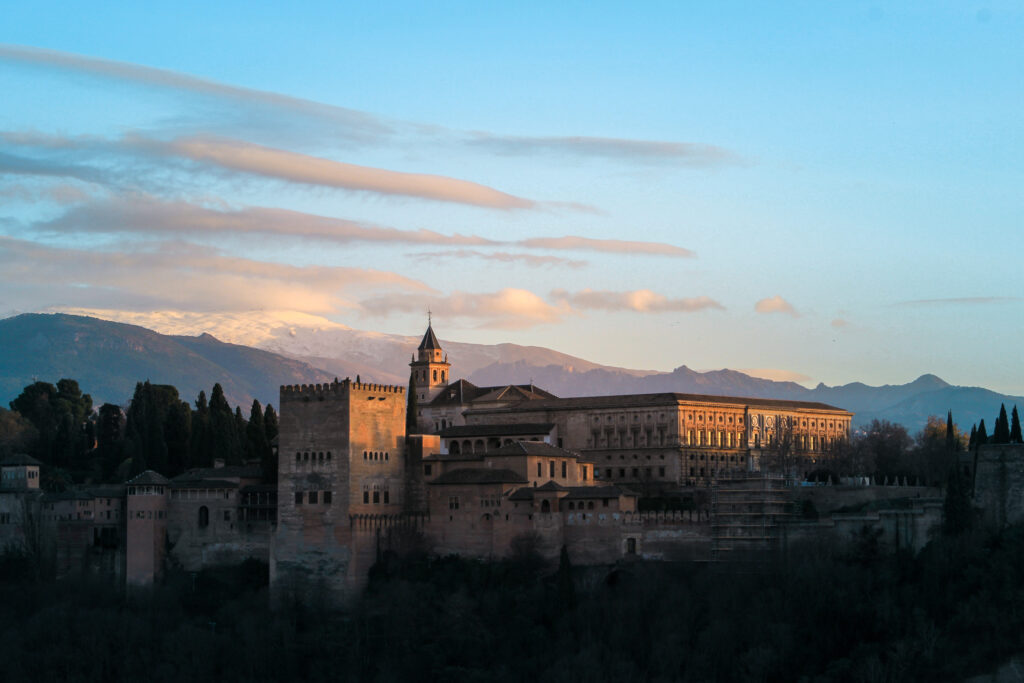
Alhambra, Granada: If you bought a general ticket (in other words, entry to all palaces and museums), then you’ll have a timed ticket for Nasrid palace. Be there at the time on your ticket. They won’t let you in later. Also, be sure to bring with you the ID you used to purchase the tickets. They’ll often ask to see that rather than your ticket at the various entry points. Rent an audioguide at the main entrance to the Alhambra (near the Generalife area) so that you know what you’re looking at.
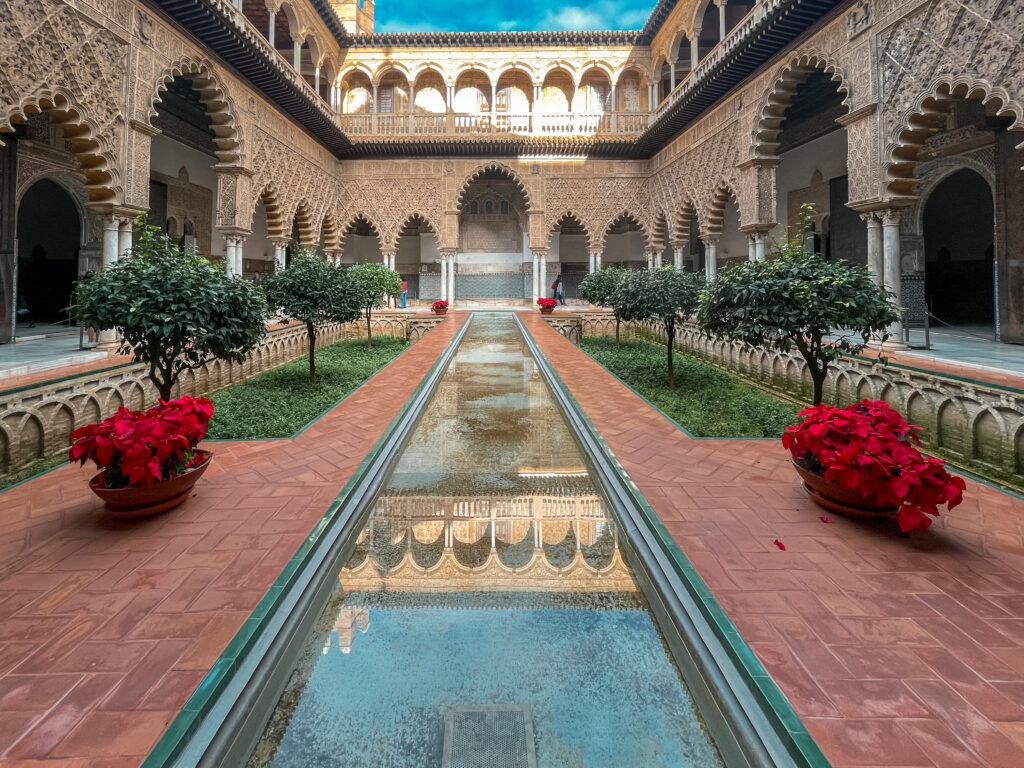
Royal Alcázar of Seville: This has become a bit of an Instagram-hyped up space, so it’s really hard to walk around without getting in the way of someone’s photo. But if you visit early on in the morning, or closer to closing hours, you’ll have far less crowds. It would also help to get a tour or audioguide as signage is pretty sparse.
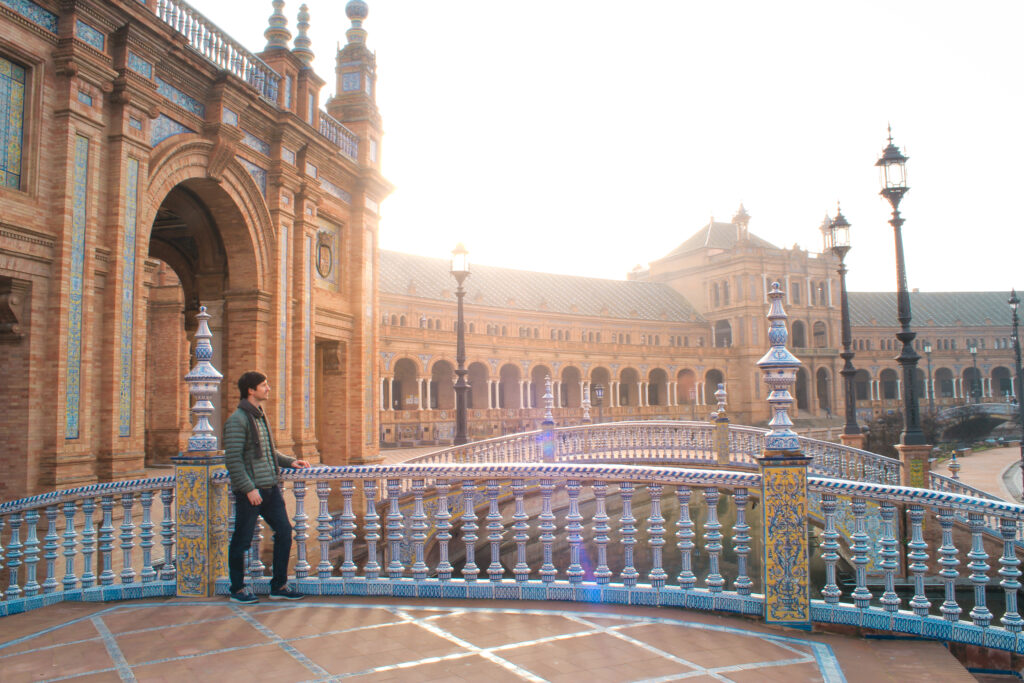
Plaza de España, Seville: There are no tickets to visit this site as it’s in a public park. That said, it gets busy fast. But if you come at sunrise, you will pretty much have the plaza to yourself. Head down to the far end farthest away from the city to snap photos and enjoy the space without any others. Don’t forget to check out the nearby park as well – it’s stunning!
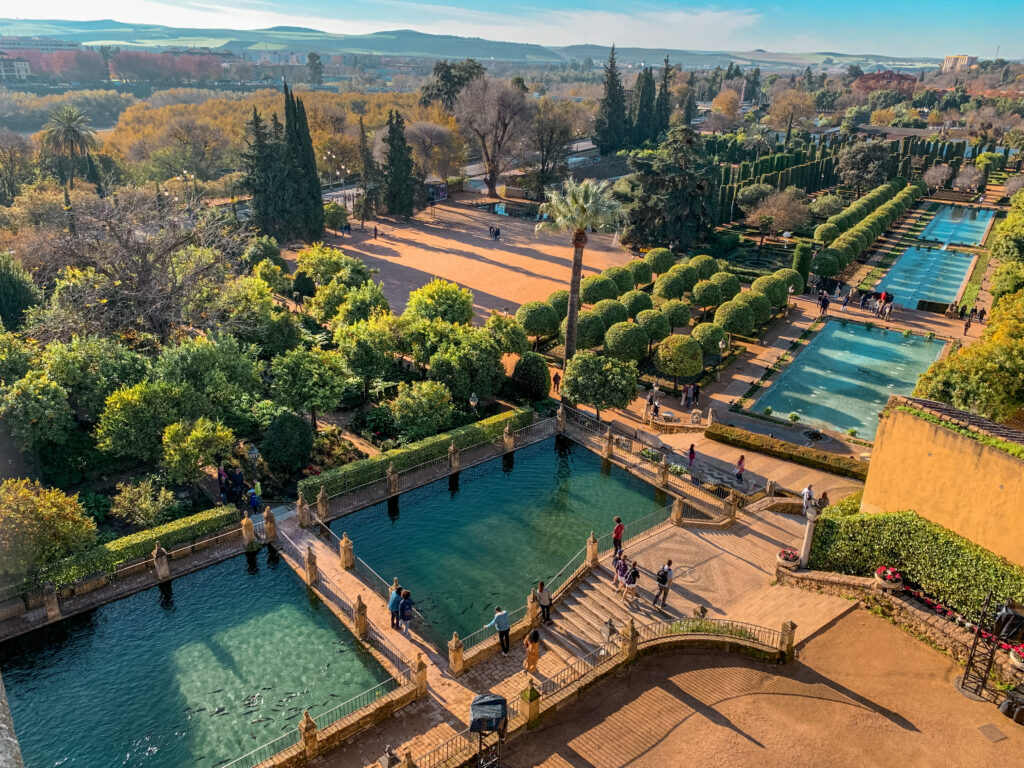
Alcázar of Cordoba: While not as popular as the nearby mosque, the palace gardens still draw a lot of attention. Make sure to arrive early. Or alternatively get tickets for one of the night light shows.
Recommended Hikes
The top three hikes we did, and that I can highly recommend, I have detailed below.
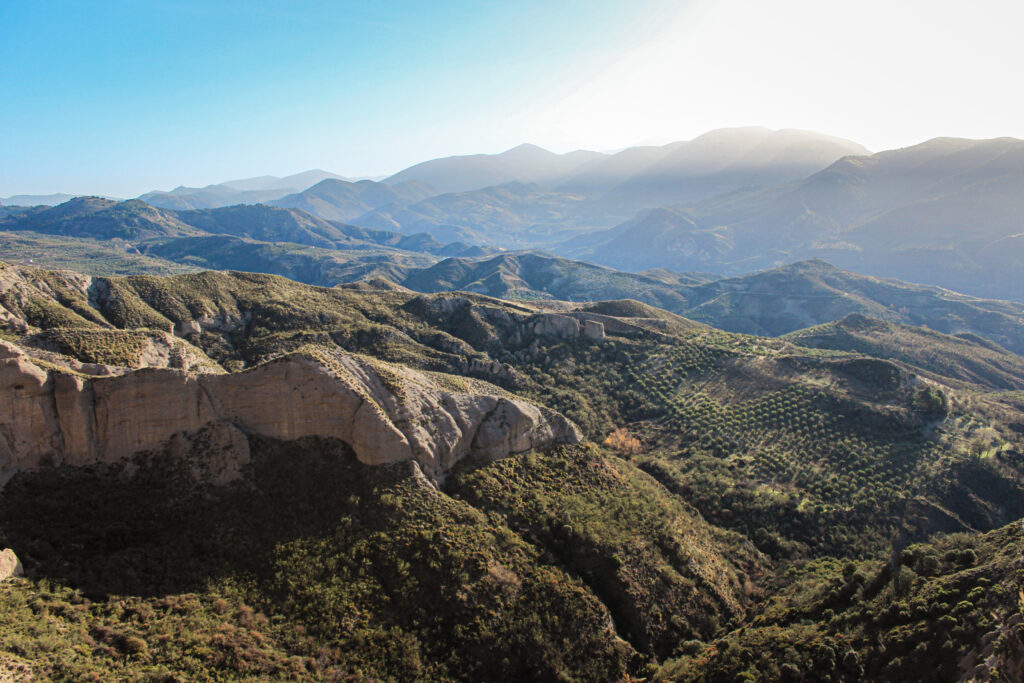
Beas to Granada
This walk, which can easily be done in half a day, takes you through olive farms, alongside valleys with towns far off in the distance, past sweeping views of the snow-capped Sierra Nevada, and finally through the Generalife park heading down towards the Alhambra.
If you want to do this hike, you should do it in the direction of Beas de Granada hiking back towards Granada. In this direction, you’ll hike downhill more than uphill (though overall the elevation difference in the reverse direction is only a matter of 300m). More importantly, getting to Beas by bus is easier than timing your hike to catch a bus back to Granada.
You can catch the public bus 300 to Beas de Granada. Buses run infrequently between Granada and Beas, about every 1 to 2 hours. You can take a taxi for 30 Euro, but a bus ticket is significantly cheaper. A ticket is 1.70 Euro per person, one way. You can pay for it with cash on the bus. Take the bus all the way to the last stop and then follow this route on AllTrails to find the path.
Shade is almost absent the whole way along the route, so bring plenty of water (at least a litre in winter, and two in summer). The total hike is about 17km and took us five hours since we stopped frequently to take in the stunning views. The path follows a gravel road the whole way, which makes it an easy walk and less of a hike, but in winter when the higher-altitude hiking routes may be inaccessible due to snow, this is a fantastic day activity.
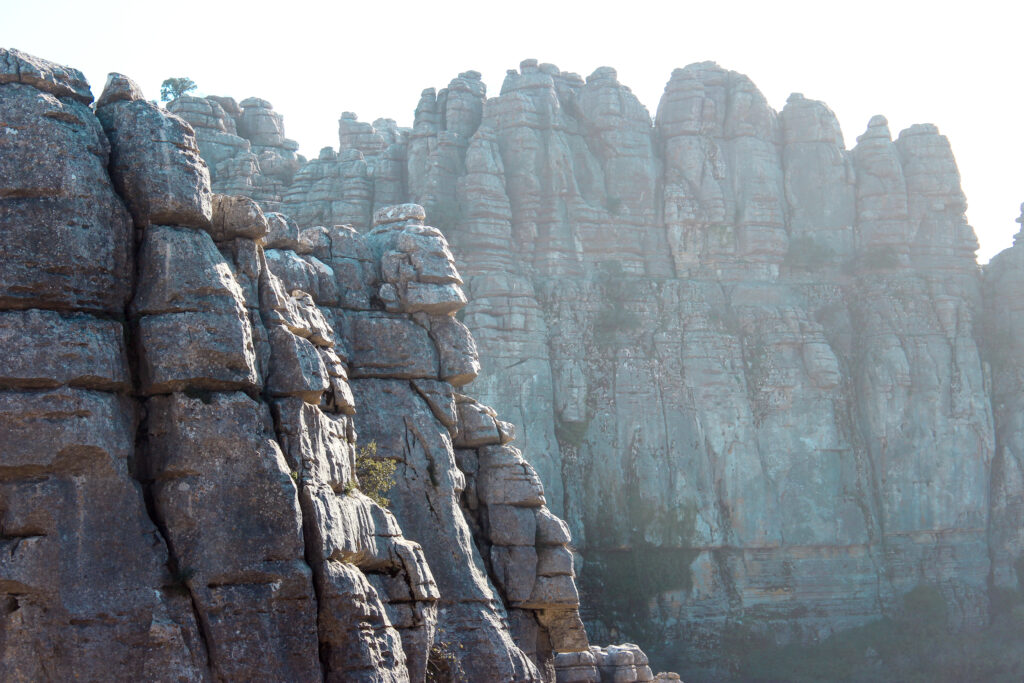
El Torcal, Yellow Route
This area, perched on an extensive mountaintop, is famous for its unique rock formations – an impressive karstic landscape made of limestone. There are multiple routes of varying lengths you can undertake, but two of the more popular are found by the visitor’s centre at the end of the road. The green route is a short, 1.5km loop, while the yellow loop extends from this to cover 3km. There are various rock formations along both routes. We did the yellow loop to explore a bit more, but one of the best viewpoints is found at the end of the yellow and green loop. You can find this viewpoint of the valley by deviating to the right if you are following the loop in a counterclockwise direction, and follow the path up towards the rock plateau just before you walk back up to the visitor’s centre.
The walks are quite easy, but limestone can be slippery, so you’ll want a bit of grip. There might also be muddy sections, so maybe don’t wear your finest white shoes.
There are toilets available at the visitor’s centre as well as refreshments. There is quite a bit of parking, but it can get packed during peak hours, so it’s best to visit in the morning before 11am or in the afternoon after 3pm (if visiting in the winter).
The route is well-signaged, but you can also follow along using the route on AllTrails.
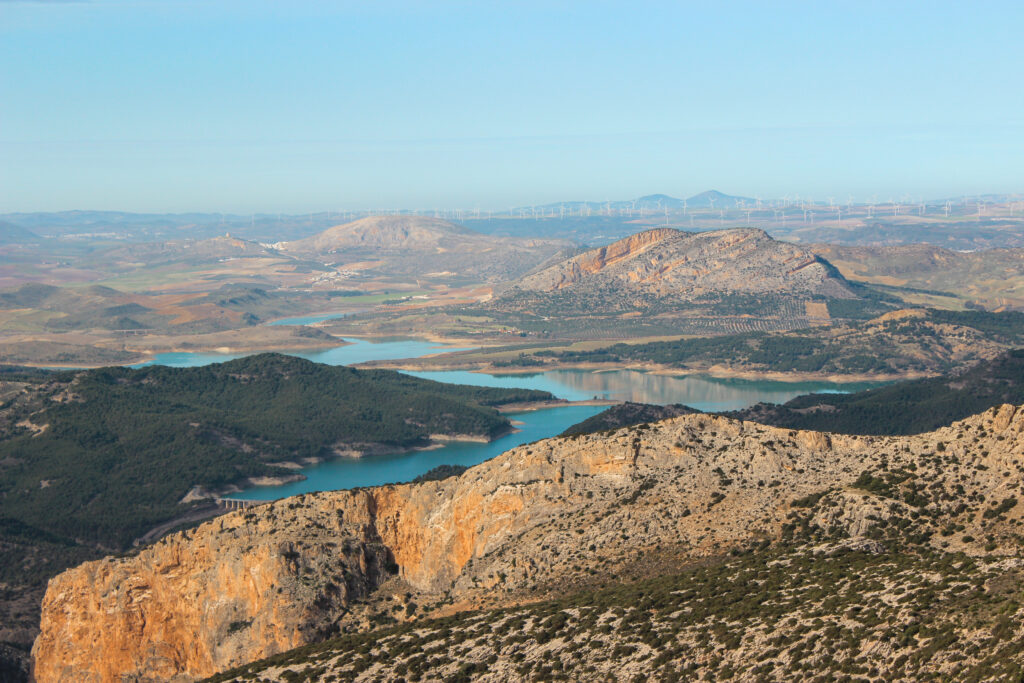
El Chorro, up Escaleras Arabes to Pico Huma
El Chorro is a climber’s paradise. It’s also famous for the Caminito del Rey cliff hiking experience. It’s also an amazing place to go hiking.
The one we did, which I can highly recommend, is the route via Escaleras Arabes and up to Huma. You can either head all the way up to the peak, but honestly the views from the T-intersection where the path ascends for 1.5km up to the peak were good enough for us. Because of the quality of the ground and the sheer slipperyness in some places, we’d recommend doing this route clockwise, heading up the Arab stairs rather than down them. You can follow the route via AllTrails here.
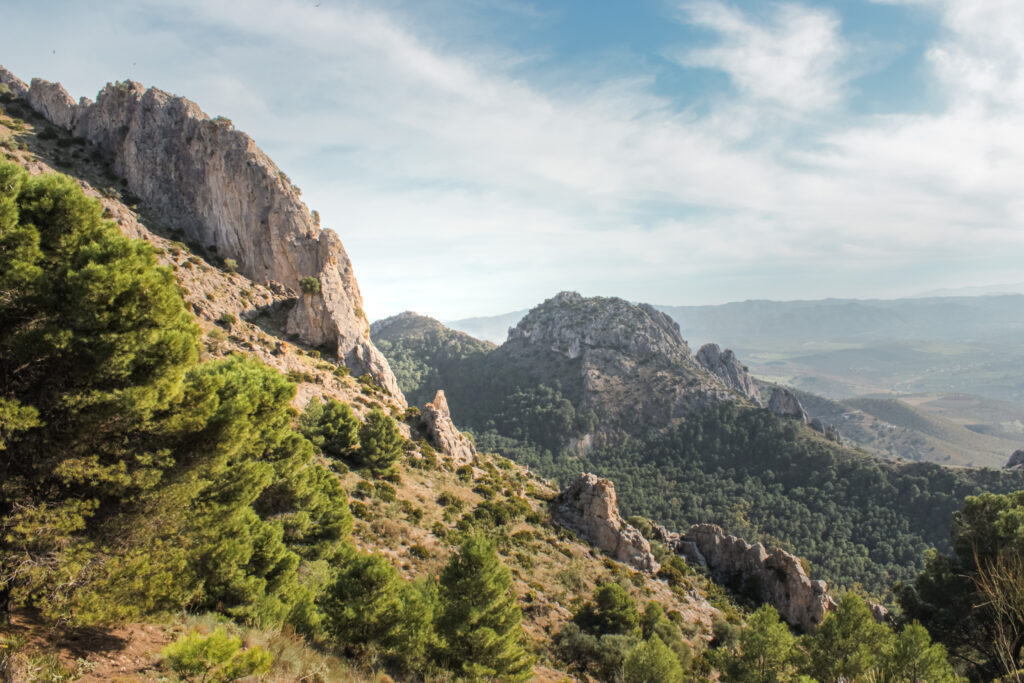
Getting Around
Within each city you can easily get around on foot. Alternatively most cities have bike share programmes where you can rent a bike for a day – the first 30 minutes of use are free of charge (included in the daily fee) and any time above that carries an additional charge.
To get between cities, Renfe operates daily train services. Trains are quick, comfortable and easy to use. While buses are also available, we opted for trains even though they were a bit more expensive to save time. Just make sure you arrive to the station early as you will need to pass through security before boarding. Be sure to book your ticket in advance to get the best deals.
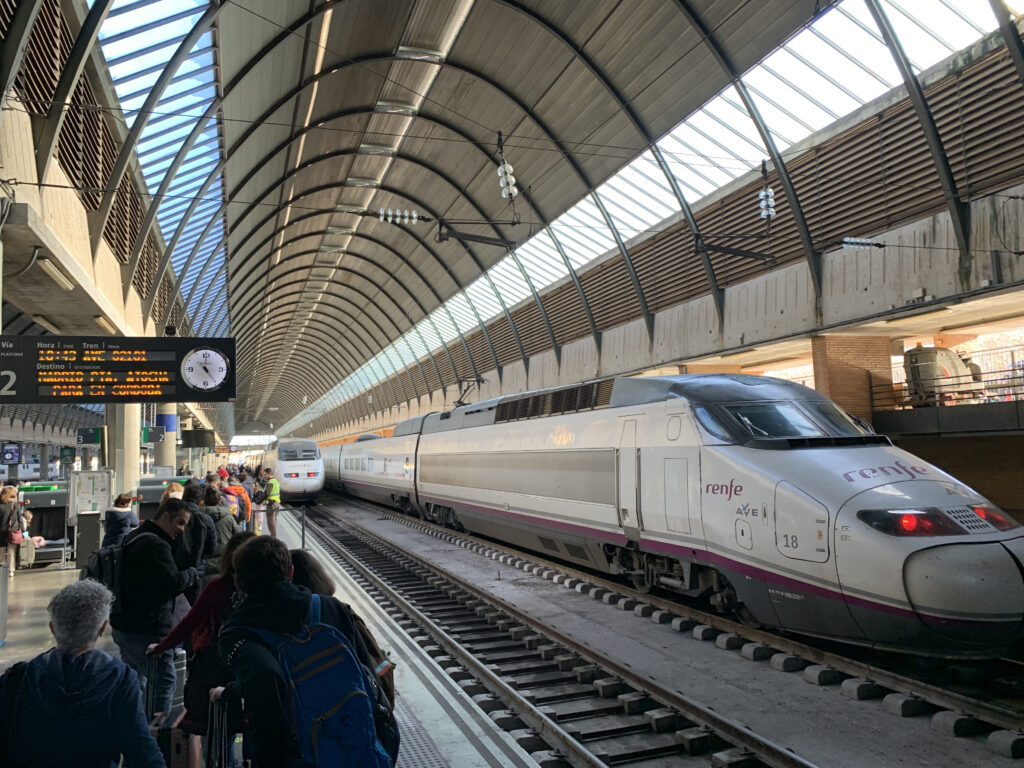
Spain is relatively easy to drive around, in case you want to rent a car. However, be warned roads can be narrow in the old city centres and rural mountain roads are not only narrow but extremely windy. A small car is probably a good idea. That said, we rented a car from Alamo via VipCars and drove around without any issues. The benefit to a rental car is that you can access more hikes and attractions like olive farms. Plus the drives are insanely beautiful. If your license is from outside the EU, you will need an International Driver’s licence. You can get one of these from your home country (usually from AAA).
